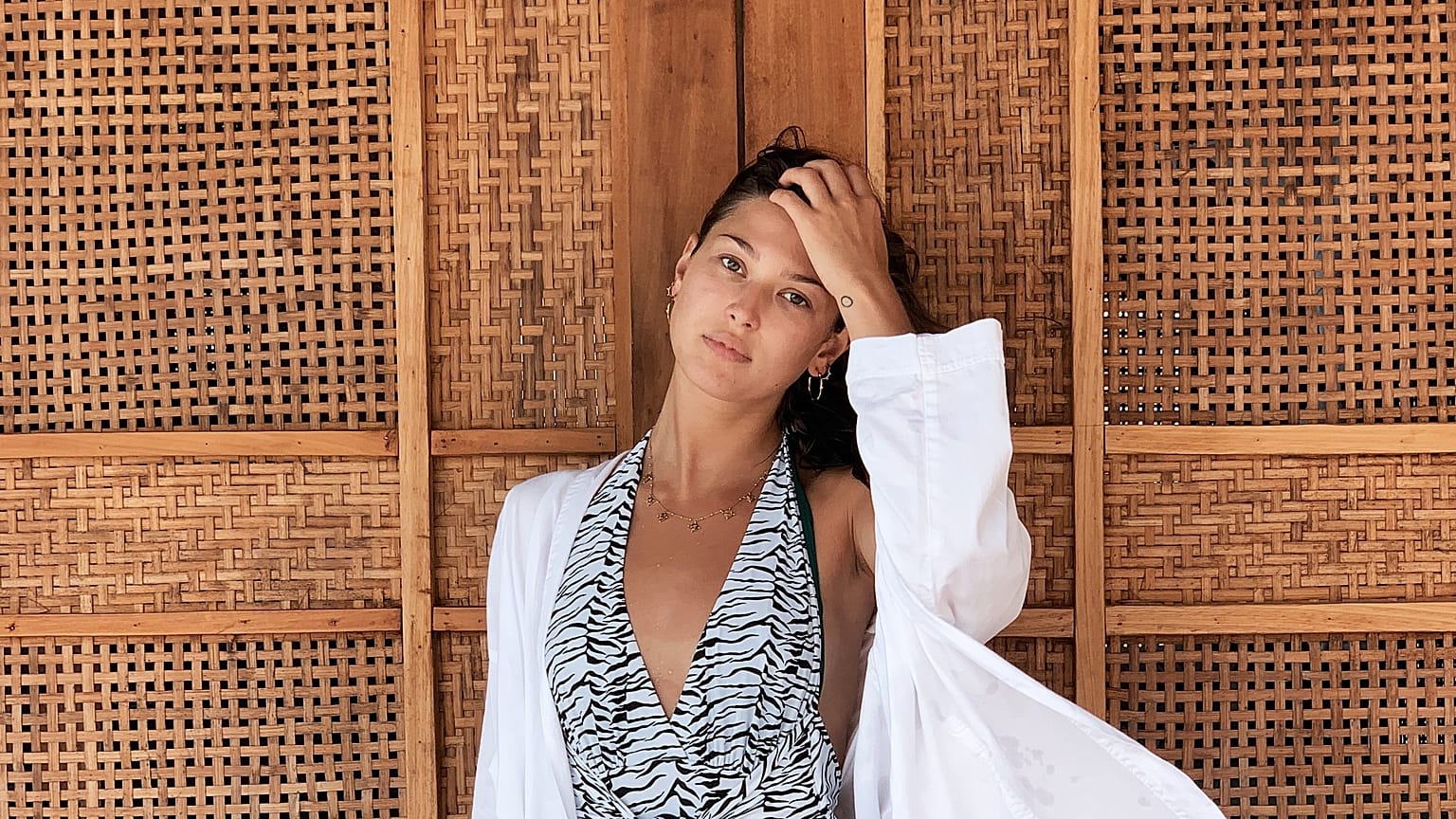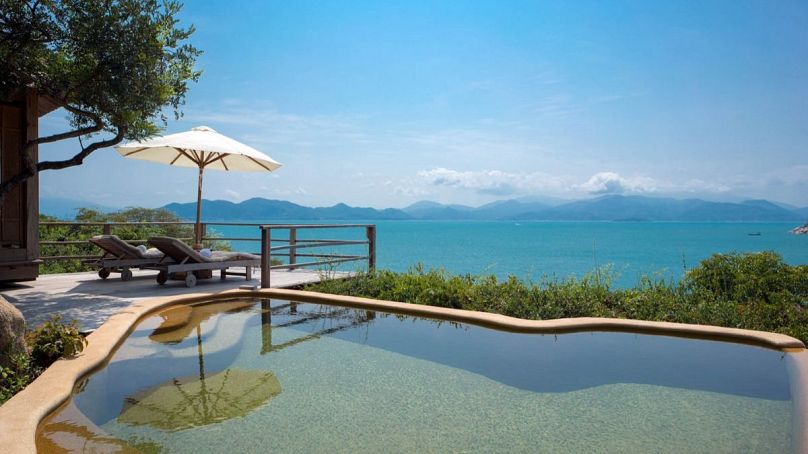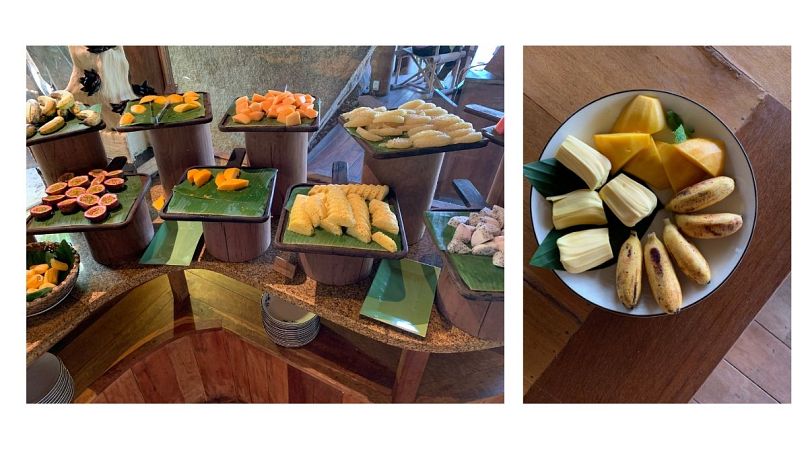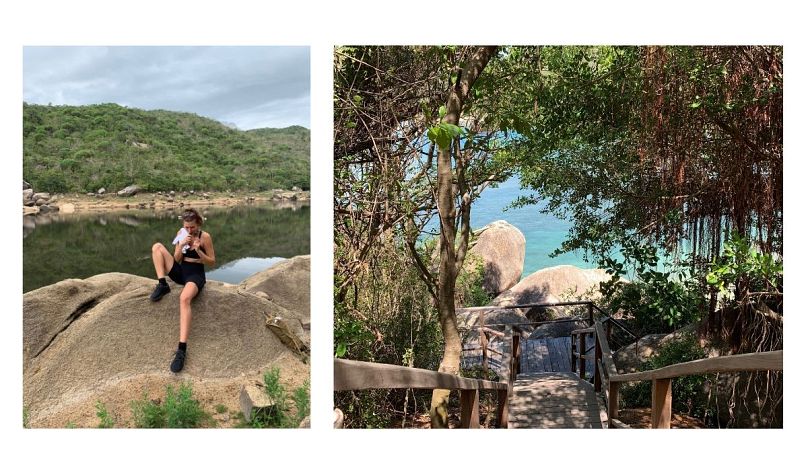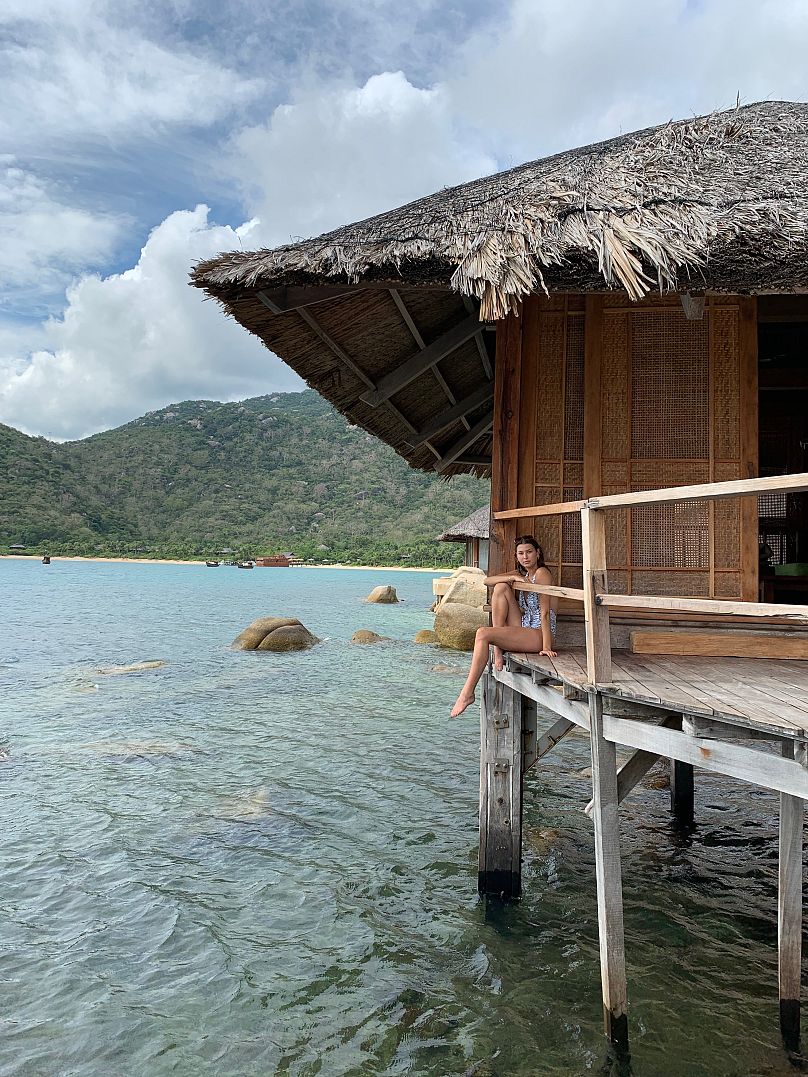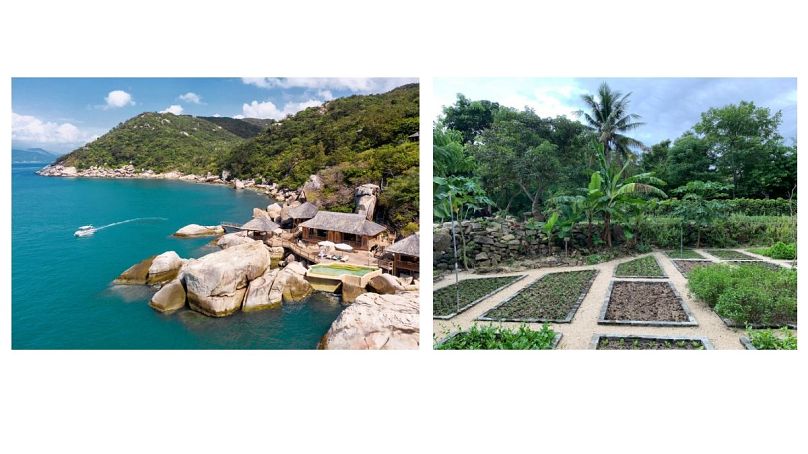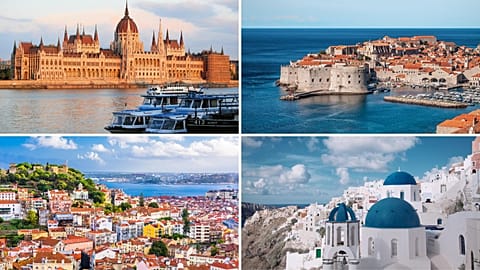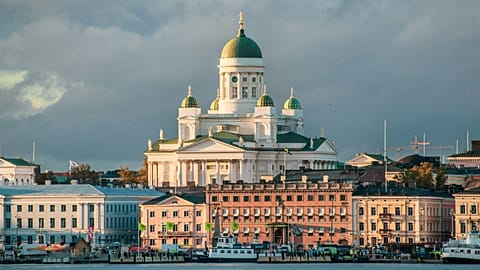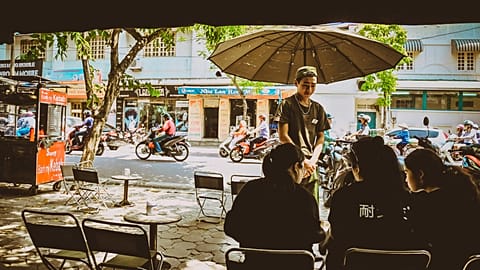Wellness influencer Danielle Copperman goes back to basics at a sustainable resort on the east coast of Vietnam.
Model, entrepreneur and wellness influencer Danielle Copperman travelled to Vietnam and stays at Six Senses Ninh Van Bay for Euronews Living. This is her take...
I like to think I know my stuff when it comes to sustainability, but visiting Six Senses Nihn Van Bay made me realise how much more I have to learn and how much more I could be doing. Let me tell you, these guys are not messing about. Here is all that I got up to during my stay in Vietnam and why I felt so inspired upon leaving.
Situated on a remote island reachable only by boat, my arrival to Six Senses Nihn Van Bay felt like some kind of dream. Surrounded by natural rock formations, white sand beaches and a backdrop of towering mountains, I felt immediately immersed in nature, far removed from home and any kind of civilisation beyond the resort staff. Not forgetting, of course, my friendly Langur neighbours (a troop of rare, endangered monkeys that are protected by the resorts Earth Lab team in on-going conservation projects).
I arrived after dark, so headed straight to my designated private villa (built using natural, local materials like red wood and bamboo) and, after some in-room dining, settled into a cloud-like bed.
Poolside retreat and jungle hideaway
Waking the next morning having seen nothing much in the dark was magical. I drew my blinds to reveal a private pool area with direct access along a sandy pathway, leading onto the beach. I stood with my toes in the sand taking it all in, looking back over my shoulder at the resort, a combination of beachside and hilltop residences.
As my stay progressed, I grew to love exploring the resort by bike, cycling along the sandy paths surrounded by nature. The staff informed me that they don’t knock anything down when developing the resort, instead building around natural rock formations and the abundance of plants and greenery so as not to destroy the environment. Exploring their gardens and plantations was fascinating. I found out that they grow the most amazing produce on site, from lemongrass, mango, papaya, pomelo, kumkwat and dragon fruit to spinach, lettuce, cucumber, mushrooms, herbs, and so much more. Most of the produce used in the food served on site comes from these gardens or from local suppliers, and beyond it being kinder to the environment this way, everything just tastes more juicy!
I noticed the resort was also incredibly conscious about food waste and was told that most leftovers are either enjoyed by the staff, or put back into compost to nourish the gardens in a circular fashion. They even use things like leftover orange peel from the morning juices to turn into essential oils in their alembic distillery.
Throughout my stay at the resort we took part in all kinds of daily activities, from paddle boarding, hiking and swimming to cooking classes, flying yoga and spa treatments. Upon arrival I had a wellness screening, during which the doctor assessed all aspects of my wellbeing using non-invasive technology to measure my key biomarkers. This was designed to reveal all sorts of things about my metabolism, body fat percentage, stress levels and insulin response, down to every little detail like my vitamin, nutrient and toxin levels.
Proving Asia can excel with an eco-conscious hotel and spa
The results are then used to plan bespoke treatments specific to my needs, including a combination of therapies and diet, fitness and lifestyle suggestions to try out and then adopt back home too. For me, the highlights of the daily excursions had to be our early morning hikes through the jungle (which turned into more of a bouldering exercise), the soothing spa treatments (along with using the facilities like the panoramic gym at leisure) and flying yoga sessions (yes, it’s really like flying).
Now, as I mentioned, the sustainability projects and programs running both publically and internally are next-level at Ninh Van Bay. It’s not only about what they don’t do, it’s about what they do do, too. The resort attempts not to use excess amounts of energy (keeping track of its daily usage and trying to improve constantly), is conscious about reducing carbon emissions and keeps laundering to a minimum with guests’ permission (they leave notes in each bedroom for you to select whether you want new bed sheets or towels to avoid one-time usage). Equally, it avoids using plastic wherever possible, promising to be totally plastic-free by the year 2020.
So beyond what they don’t do, what they actively do includes planting 10 trees for every tree they knock down, using water from a local lake for the resort’s main supply, running regular beach cleans in the local areas and operating coral transplantation programs. I was especially interested in the coral transplantation and had lots of questions. The way it works is - they take small amounts of healthy coral and attach it to a frame, which preserves the coral in the area and benefits the local sea life. The best bit for me though, was hearing about all the creative hacks the resort pioneered, such as turning old towels into plant pots and making beeswax wraps for food storage.
Perhaps the most inspiring thing for me was the notice board outside the Earth Lab, updated every day at noon, which details energy and water consumption per room per night. It also shows you the energy generated by solar panels around the resort, how much waste water is recycled, total plastic water bottles diverted from landfill and even organic garden production by kg.
It was amazing to observe the way the resort was striving to be more sustainable day by day. In association with Green Viet NGO, it also works in tandem on a selection of projects concerning animals and biodiversity. I could not recommend Six Senses Ninh Van Bay enough, it was an oasis of calm and a hub for environmental innovation.
Visiting Ninh Van Bay, Six Sense
Getting there: You’ll arrive at Cam Ranh Airport (CXR) where you'll be met and your transfer arranged. It takes 60-minute by car/van to the resort’s lounge at Nha Trang, then a 20-minute boat ride across to Six Senses Ninh Van Bay, which is accessible only by water. Nha Trang is 280 miles (450 kilometers) from Ho Chi Minh City (SGN) and 840 miles (1,350 kilometers) from Hanoi (HAN).
When to visit: Passionate scuba diver? The visibility is best from February to October. Outdoor pursuits? From March to October, the weather is ideal for sailing and hiking. Cozy up in the spa in November, when the weather outside is less predictable.
Price: Starts at £528 per couple per night
More information and booking: Visit Six Senses
Follow Danielle @dcopperman
















